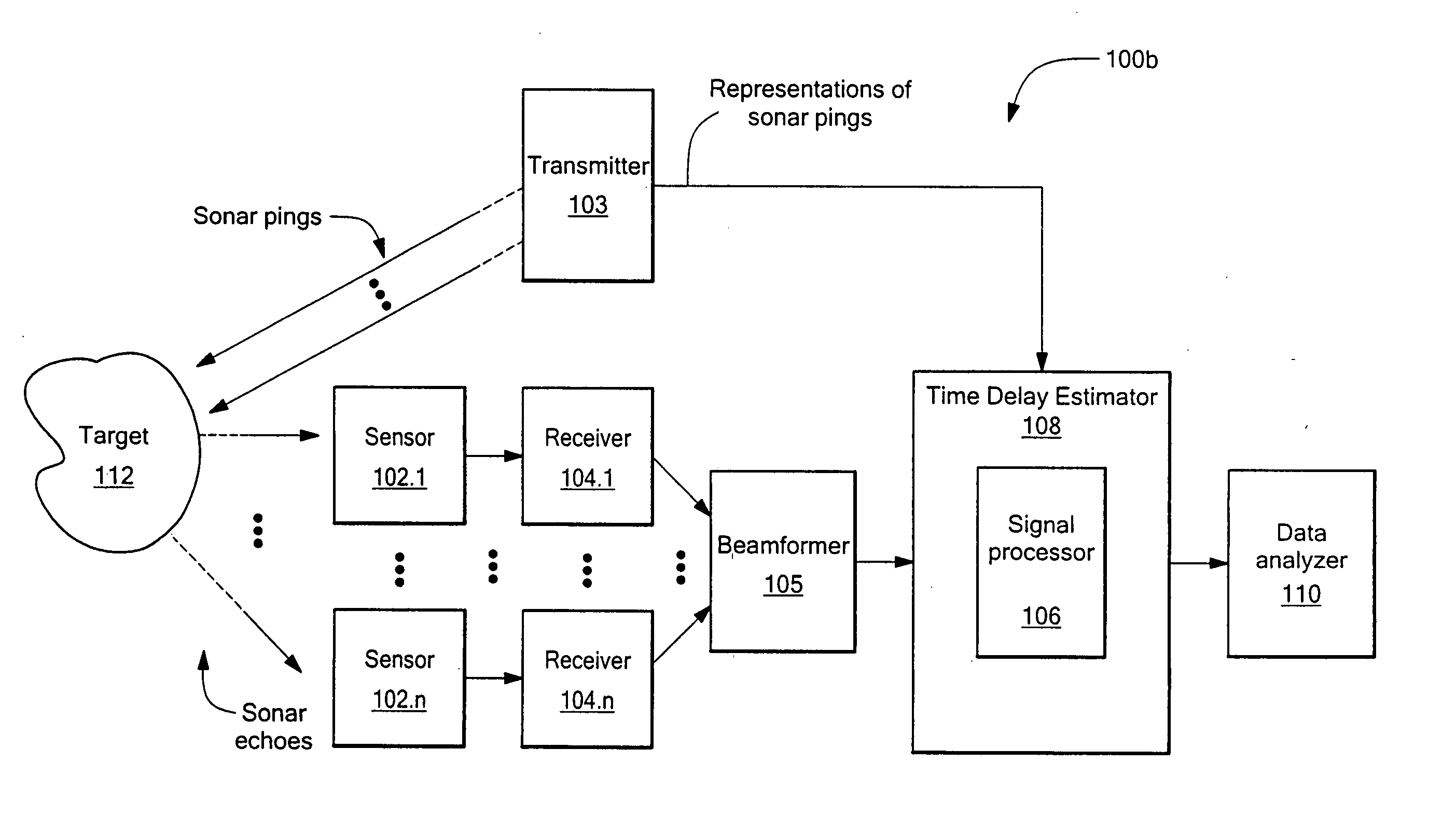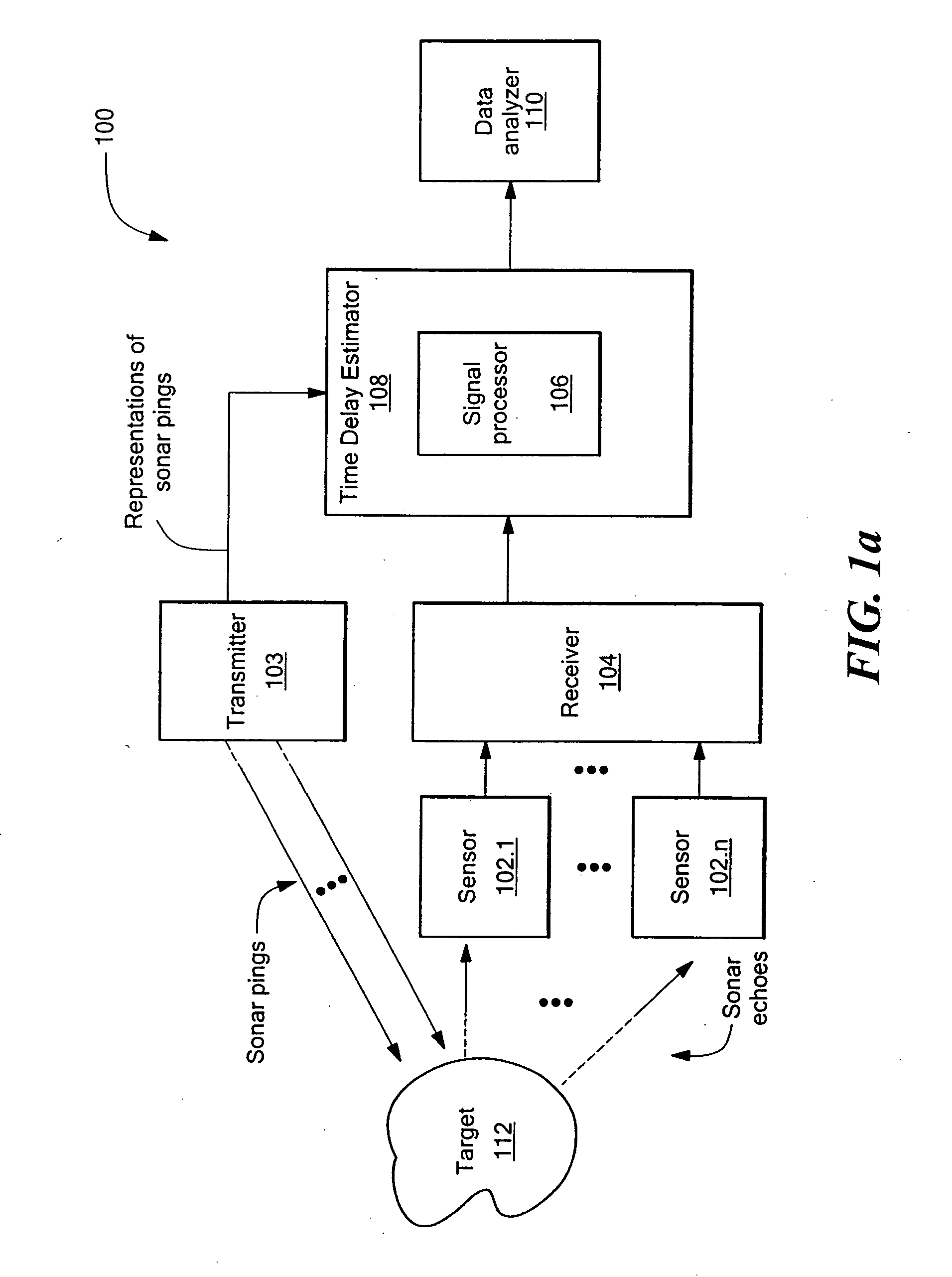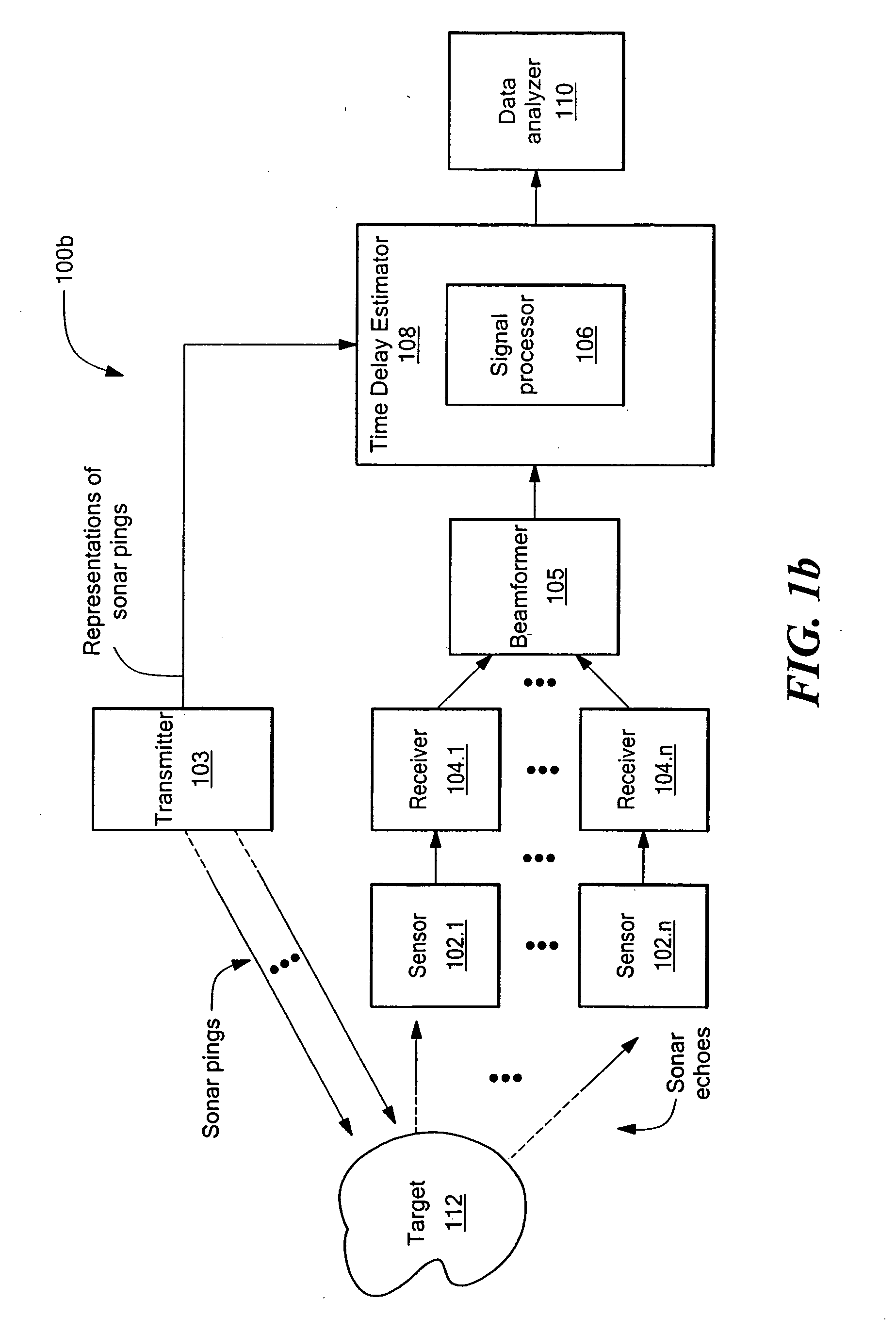Apparatus and method for performing time delay estimation of signals propagating through an environment
a time delay estimation and environment technology, applied in the field of signal processing, can solve the problems of low signal-to-noise ratio (snr), the effect of reducing the accuracy of sonar ranging, and the inability of the correlator to produce accurate range measurements, so as to increase the accuracy of time delay estimation
- Summary
- Abstract
- Description
- Claims
- Application Information
AI Technical Summary
Benefits of technology
Problems solved by technology
Method used
Image
Examples
first embodiment
It is noted that the bound on the probability expressed in equation (32) is equal to the bound on the probability expressed in equation (27) for a single ping, thereby indicating that the bound on the probability α does not change with the number of pings. For this reason, taking the mean of the distribution of echo delay estimations, as described above with reference to the presently disclosed sonar system, generally does not improve the noise tolerance of the system, even though the accuracy of echo delay estimation is improved.
[0076] The method of the second embodiment of the sonar system 100 (see FIG. 1a) increases the accuracy of echo delay estimation and improves the noise tolerance of the system via a calculation of the mode of the distribution of echo delay estimates derived from multiple pings. As depicted in FIG. 12, the a priori window of the cross correlation may be divided into a total of m=└2 L / Δ┘ intervals B1, B2, . . . , Bm, in which B1=IΔ represents the correct bin....
PUM
 Login to View More
Login to View More Abstract
Description
Claims
Application Information
 Login to View More
Login to View More - R&D
- Intellectual Property
- Life Sciences
- Materials
- Tech Scout
- Unparalleled Data Quality
- Higher Quality Content
- 60% Fewer Hallucinations
Browse by: Latest US Patents, China's latest patents, Technical Efficacy Thesaurus, Application Domain, Technology Topic, Popular Technical Reports.
© 2025 PatSnap. All rights reserved.Legal|Privacy policy|Modern Slavery Act Transparency Statement|Sitemap|About US| Contact US: help@patsnap.com



